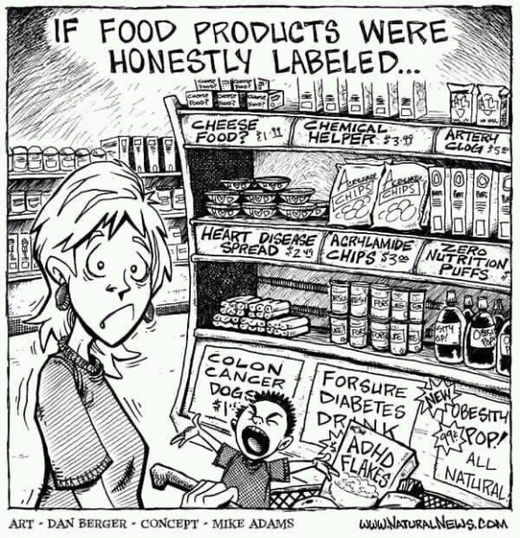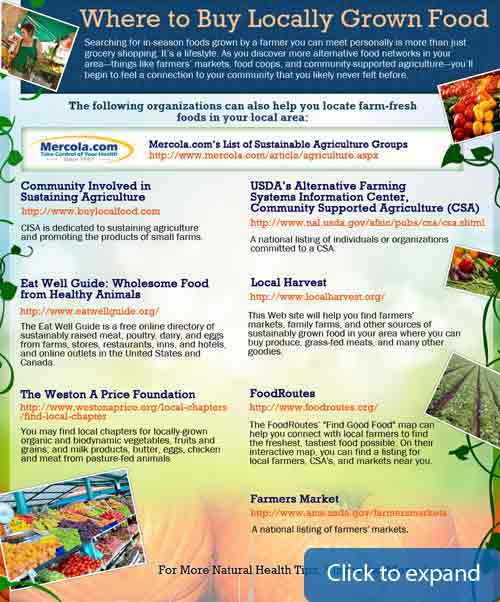But not so fast. A growing number of cases of "food fraud" are occurring in the United States, such that you may not be able to tell what you're really eating just by looking at the label.
Worse still, most of these cases are not highly publicized incidents like the recent scandal of UK supermarkets selling "beef" burgers that actually contained horse and pig meat. Instead, they're ongoing cases of blatant misrepresentation among some incredibly common foods.
What Is Food Fraud?
Food fraud, defined as "the deliberate substitution, addition, tampering or misrepresentation of food, food ingredients or food packaging, or false or misleading statements made about a product for economic gain,"1 is the focus of the U.S. Pharmacopeial Convention's (USP) Food Fraud Database,2 which already has more than 1,300 records of food fraud published from 1980 to 2010.
A recent update, which added in cases from 2011 and 2012, increased the number of records by 60 percent, or nearly 800 new records, and includes some foods you very well may eat every day, like olive oil, honey, seafood and orange juice.
In some cases, the foods were diluted with ingredients not listed on the label. In others, the food was something entirely different than it claimed to be.
Still others contained undisclosed "clouding agents," including the cancer-causing, reproductive-system-damaging plasticizer Di(2-ethylhexyl) phthalate (DEHP), which was added to fruit juices in order to make them appear freshly squeezed. USP found that 877 food products from 315 different companies contained fake clouding agents.
In every case, the food fraud revealed that what you think you're eating may be far from reality, and the manipulation of food and food ingredients may be far more widespread than anyone realized. Dr. Jeffrey Moore, senior scientific liaison for USP, explained3:
The 10 Most Common Fraudulent Foods"While food fraud has been around for centuries, with a handful of notorious cases well documented, we suspect that what we know about the topic is just the tip of the iceberg."
1. Olive Oil
Even "extra virgin" olive oil is often diluted with other less expensive oils, including hazelnut, soybean, corn, sunflower, palm, sesame, grape seed and walnut.2. Milk
Milk was found to contain vegetable oil, whey, caustic soda, cane sugar, detergent and even toxic compounds like melamine and formaldehyde.3. Honey
Honey is often not "honey" but instead a mix of high-fructose corn syrup, sucrose syrup, invert beet sugar, water and essential oils.4. Saffron
It's the world's most expensive spice, but it often contains adulterants such as glycerin, sandalwood dust, tartrazine (yellow dye), barium sulfate, borax, marigold flowers and even colored corn strings.5. Orange Juice
Lemon juice, sugar water, paprika extract, marigold flower extract, and a synthetic sugar/acid mixture may all be lurking in your favorite orange juice.6. Coffee
Coffee, whether ground or instant, is a likely source of hidden "ingredients" like roasted corn, ground parchment, barley, coffee twigs, potato flower, malt, chicory and caramel.7. Apple Juice
This childhood favorite may contain corn syrup, raisin sweetener, malic acid, beet sugar and other juices, such as grape, pineapple, pear and fig.8. Tea
Hiding inside your tea bag may be sand, sawdust, starch, China clay, used tea leaves and color additives. Some tea bags, meanwhile, are made with plastic, such as nylon, thermoplastic, PVC or polypropylene. While these plastics have high melting points, the temperature at which the molecules in polymers begin to break down is always lower than the melting point, which could allow the bags to leach compounds of unknown health hazards into your tea when steeped in boiling water.9. Fish
Even paper tea bags are frequently treated with epichlorophydrin, which hydrolyzes to 3-MCPD when contact with water occurs. 3-MCPD is a carcinogen associated with food processing that has also been implicated in infertility and suppressed immune function.
Seafood fraud is actually very widespread, as according to the nonprofit ocean protection group Oceana,4 nearly 60 percent of fish labeled "tuna" in the US is not actually tuna. A shocking 84 percent of "white tuna" sold in sushi venues was actually escolar, a fish associated with acute and serious digestive effects if you eat just a couple of ounces.10. Black Pepper
One-third of all fish samples tested across the US were found to be mislabeled, substituted for cheaper, less desirable and/or more readily available fish varieties. For instance, 87 percent of fish sold as snapper was actually some other type of fish, and the USP found that monkfish was sometimes actually puffer fish, which can also cause poisoning.
This spice is often adulterated with juniper berries, papaya seeds, starch, buckwheat flour and millet seeds. Other foods that made frequent appearances in the fraudulent food database include:
- Turmeric
- Chili powder
- Cooking oil
- Shrimp
- Lemon juice
- Maple syrup
FoodFraud.org
Yahoo March 11, 2013
BlissTree.com April 2013
Prevention.com
1 PRNewswire January 23, 2013
2 FoodFraud.org
3 PRNewswire January 23, 2013
4 Oceana Seafood Fraud Study February 2013 [PDF]





Reader Comments
here's a short comment on Bee Wilson's book, 'Swindled, The Dark History of Food Fraud.'
Wilson pays special attention to nineteenth- and twentieth-century America and England and their roles in developing both industrial-scale food adulteration and the scientific ability to combat it. As Swindled reveals, modern science has both helped and hindered food fraudsters--increasing the sophistication of scams but also the means to detect them. The big breakthrough came in Victorian England when a scientist first put food under the microscope and found that much of what was sold as "genuine coffee" was anything but--and that you couldn't buy pure mustard in all of London.